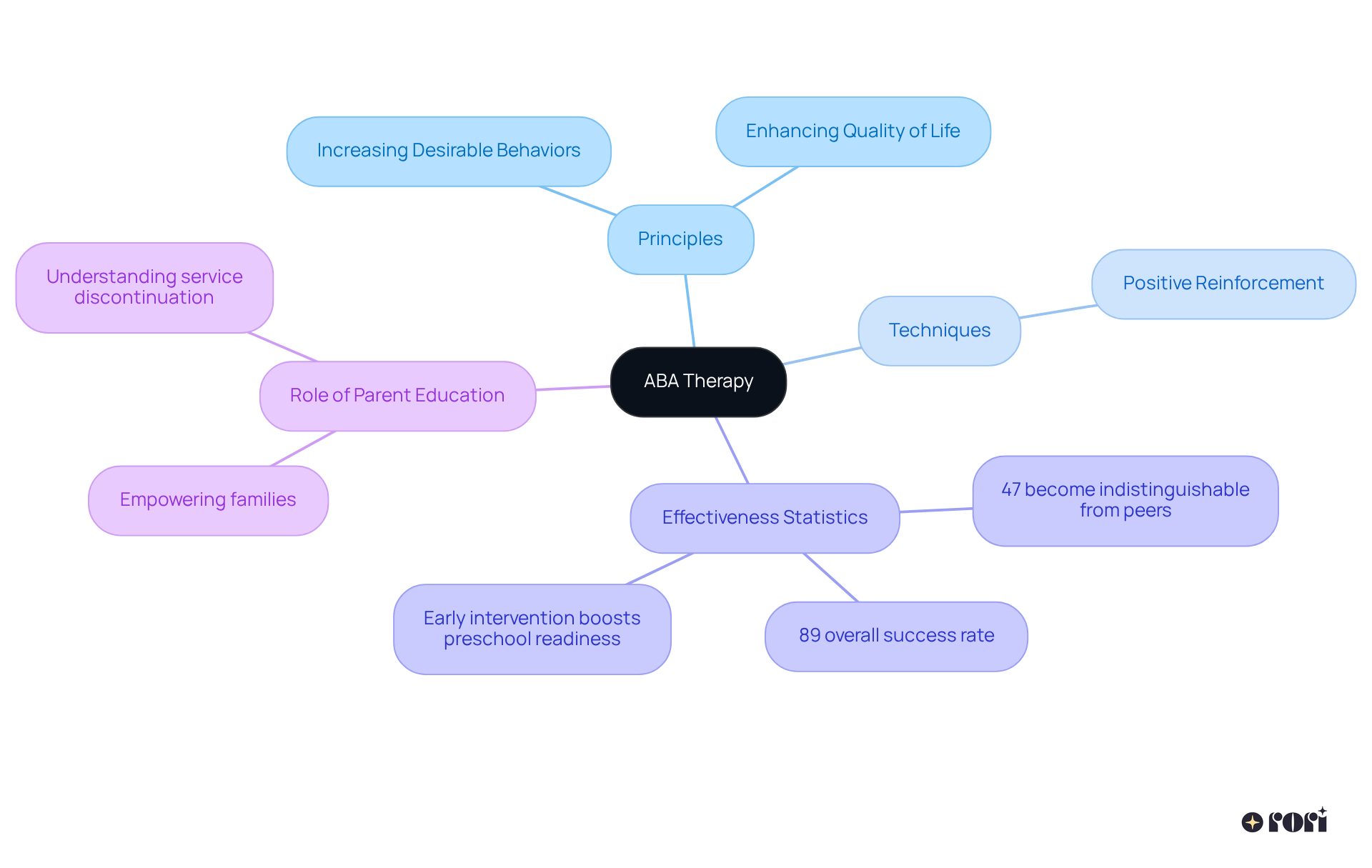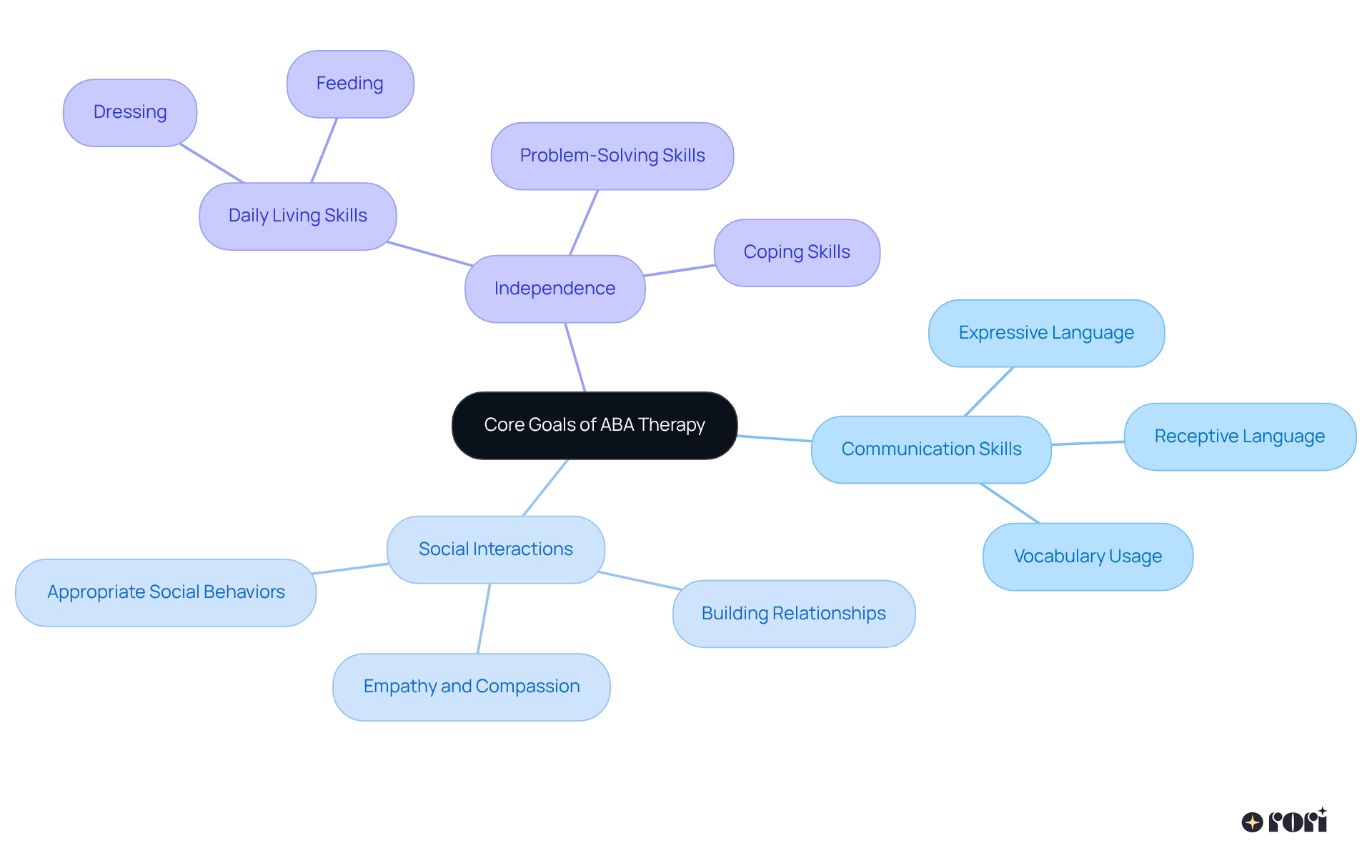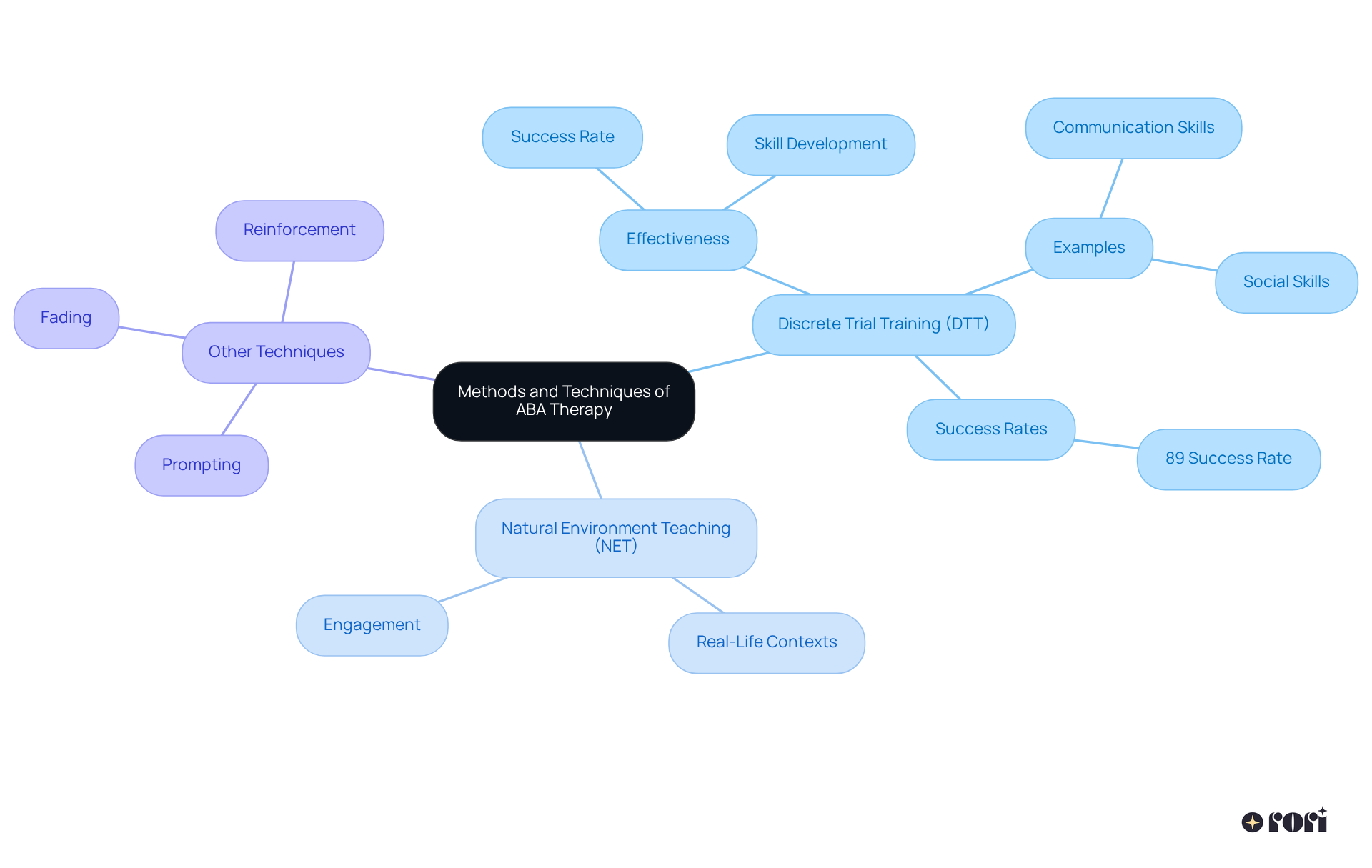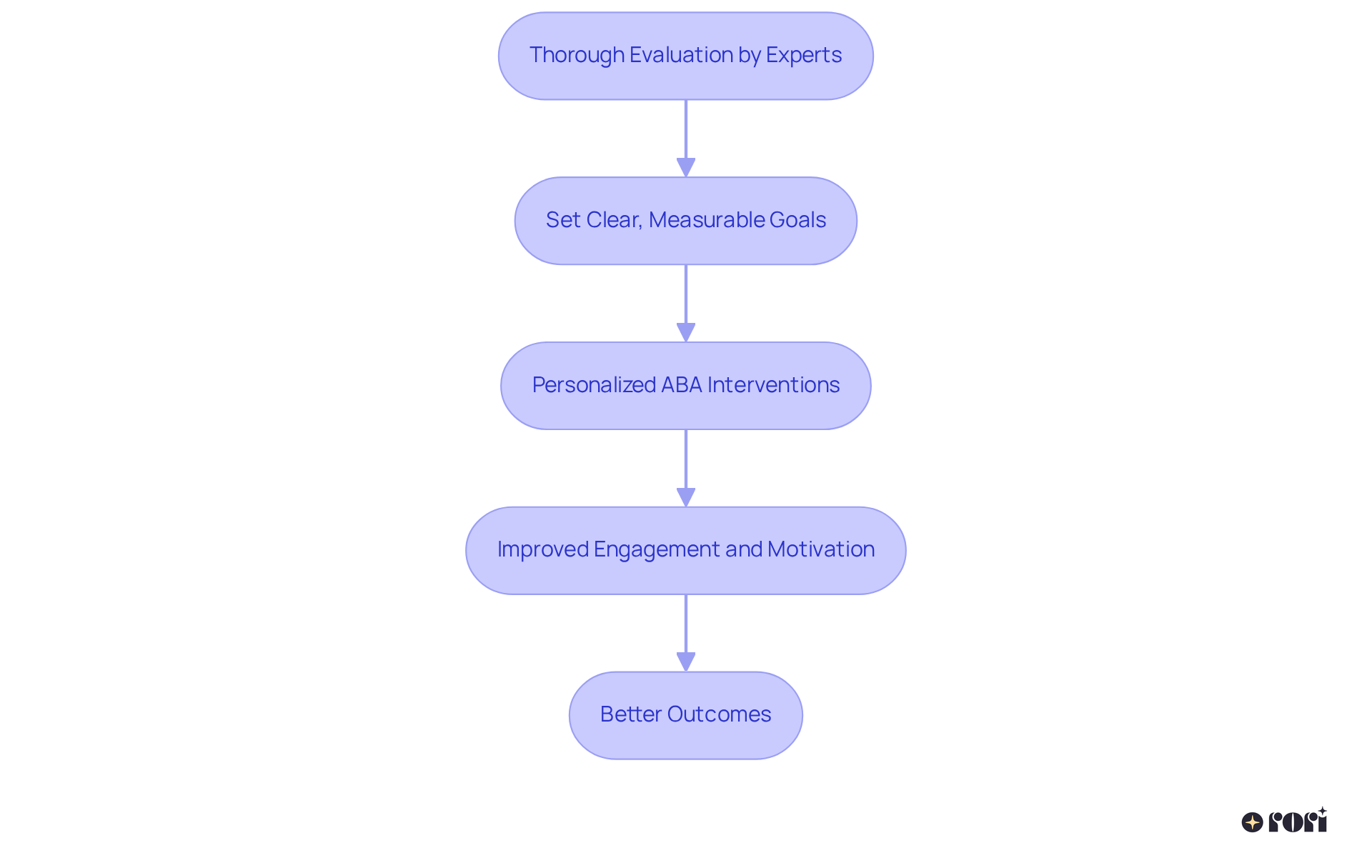The goal of Applied Behavior Analysis (ABA) is to enhance the quality of life for children with autism. It does this by increasing desirable behaviors and reducing harmful ones through systematic interventions. 🌟 This is especially important for parents, as personalized treatment plans can lead to significant improvements in communication, social skills, and daily living activities for their children. Research shows that when ABA therapy is started early and tailored to individual needs, the benefits can be remarkable. Let’s explore this together!
Applied Behavior Analysis (ABA) is an exciting approach that stands at the forefront of therapeutic strategies aimed at enhancing the lives of children with autism. By focusing on modifying behavior through structured interventions, ABA not only promotes desirable actions but also helps cultivate essential skills for independence and social engagement. But as the field evolves, we might wonder: what truly defines the success of ABA therapy? Is it just about reducing challenging behaviors, or does it also involve enriching the overall quality of life for our young ones?
Let’s explore this together! This journey dives into the core objectives of ABA, revealing how personalized approaches and targeted techniques can lead to transformative outcomes for children and their families. We’re here to help you every step of the way!
Applied Behavior Analysis (ABA) is a scientifically grounded approach designed to understand and modify behavior through systematic interventions. Its primary objective? To increase those desirable behaviors while reducing the harmful ones that can hinder learning. One key technique in ABA is positive reinforcement. When a young person successfully expresses their needs and receives praise or a small reward, they’re much more likely to repeat that behavior in the future. Isn’t that a wonderful way to encourage growth?
Recent studies highlight the effectiveness of ABA interventions for kids with autism. They show significant advancements in communication, social abilities, and daily living activities. Kids who engage in early, intensive therapy—typically around 25 to 40 hours a week—often experience remarkable developmental progress. In fact, statistics reveal that:
However, what is the goal of ABA treatment extends beyond merely altering behavior. It’s about enhancing the overall quality of life for youngsters with autism. By nurturing essential skills, ABA support helps young individuals navigate social interactions and manage daily tasks independently. Even those facing the most significant adaptive challenges at the start show measurable progress in adaptive behavior. This really illustrates the intervention's effectiveness across various levels of need. As one behavior analyst beautifully put it, 'ABA intervention is not solely focused on altering behavior; it's about fostering opportunities for youngsters to flourish in their surroundings.'
Through customized interventions tailored to personal needs, ABA treatment serves as a vital approach for kids with autism, promoting lifelong learning and development. The increasing demand for ABA services—projected to grow by about 22% in the coming years—reflects the growing recognition of its benefits. It’s also essential for parents to understand why some families discontinue these services; this knowledge can be invaluable when engaging with ABA. Parent education plays a crucial role in the success of ABA intervention, empowering families to support their children’s development effectively.
Let’s explore this together! We’re here to help you every step of the way!

When considering ABA treatment, the goal of ABA is to boost communication skills, enhance social interactions, and promote independence in children. Research shows that kids who start ABA therapy before turning six often see significant improvements in various developmental areas, like expressive language and social engagement. For instance, structured interventions can really help with vocabulary usage and understanding verbal instructions, which are key for effective communication. In fact, over 20 studies have highlighted improvements in cognitive functioning, communication, and daily living skills through intensive and long-term ABA programs.
In ABA programs, children typically focus on important goals, which raises the question of what is the goal of ABA, such as clearly expressing their needs, engaging in appropriate social behaviors, and mastering daily tasks like dressing and feeding themselves. A recent meta-analysis of randomized control trials underscores that these structured interventions lead to meaningful improvements in expressive language abilities, further confirming the effectiveness of ABA methods.
Psychologists who work with young people emphasize that by honing in on these crucial areas, ABA therapy not only tackles immediate behavioral challenges but also equips kids with essential tools for long-term success in various settings, like home and school. Plus, the use of technology in ABA practices allows for personalized treatment plans that cater to each child's unique needs, ultimately enhancing their communication skills and social interactions. This all-encompassing approach helps children feel more prepared to navigate social situations and build meaningful relationships, laying a solid foundation for their future independence.
Let’s explore this together! We’re here to help you every step of the way!

ABA therapy utilizes a variety of methods and techniques to effectively help achieve what is the goal of ABA. One popular strategy is Discrete Trial Training (DTT). This approach breaks down skills into small, manageable steps, making focused learning and mastery possible. Research shows that DTT is particularly effective in skill development. For example, studies have demonstrated significant improvements in communication and social skills among individuals with autism who engage in this method. Just think of a young person who once struggled to express their needs but could do so more clearly after consistent DTT sessions. With an impressive success rate of over 89% in treating children with ASD, it's clear that DTT plays a crucial role in what is the goal of ABA, which is to achieve meaningful outcomes.
On the other hand, Natural Environment Teaching (NET) focuses on teaching skills in real-life contexts. This method encourages the generalization of learned behaviors. Picture a young child learning to request a toy during playtime—this reinforces their learning in a natural setting! Behavior analysts have observed that NET not only boosts engagement but also encourages meaningful interactions, making learning more relevant and enjoyable for children. It's worth noting that ABA interventions are moderately effective in enhancing communication skills, which relates to what is the goal of ABA, further highlighting the success of NET.
There are also other techniques, such as prompting, fading, and reinforcement, which are essential to ABA therapy. These strategies help promote desired behaviors while gradually reducing prompts as the individual gains independence. By systematically applying these methods, therapists can track progress through regular data collection. This approach allows for informed adjustments to treatment plans, ensuring that each child's unique needs are met effectively. Plus, integrating technology into ABA support enhances data collection accuracy and efficiency, optimizing outcomes even further. Long-term ABA-based interventions have shown medium to large effects on intellectual functioning, emphasizing the lasting impact of these therapeutic methods.
Let’s explore this together! If you’re considering ABA therapy for your child, remember that you’re not alone on this journey. We’re here to help you every step of the way!

Personalization in ABA therapy is so important for creating treatment plans that truly fit each child's unique strengths, challenges, and family priorities. It all starts with a thorough evaluation by certified experts, who gather insights on the child's behavior, abilities, and preferences. From this detailed assessment, therapists establish what is the goal of ABA by setting clear, measurable goals tailored to the child's developmental stage and specific needs.
Research shows that individualized goals in ABA interventions can really boost engagement and motivation, leading to better outcomes. For instance, children undergoing personalized ABA treatment often show remarkable progress in cognitive abilities, language skills, and social interactions. Plus, ABA therapy has an impressive success rate of over 89% in helping young individuals with autism spectrum disorder (ASD), which highlights how effective customized interventions can be.
By tailoring these interventions, ABA therapy not only ensures that progress is meaningful and relevant to the child's life but also fosters greater independence and achievement. Clinicians emphasize that personalized treatment strategies are key to enhancing care effectiveness, which relates to what is the goal of ABA, ultimately helping children and their families thrive.
Did you know that the estimated cost of supporting someone with autism can be around $60,000 per year? Effective treatment plans can really help ease those long-term financial burdens on families. It's also crucial to note that fewer than half (46%) of young individuals referred for ABA therapy continue treatment for 24 months, which underscores the need for personalized approaches.
Case studies, like the one on 'Personalized Treatment Plans,' show how tailored strategies can improve behavior and social skills in children with autism. Let’s explore this together! We're here to help you every step of the way!

Applied Behavior Analysis (ABA) is a wonderful framework that aims to improve the lives of individuals with autism by building essential skills and encouraging independence. It’s not just about changing behaviors; the heart of ABA is all about enhancing the overall quality of life for children, giving them the tools they need for effective communication and social interaction.
In this article, we’ve explored various aspects of ABA therapy, from its foundational principles to effective techniques like Discrete Trial Training and Natural Environment Teaching. We’ve also highlighted the importance of personalization in treatment plans. Did you know that early intervention can lead to amazing developmental progress? Tailoring approaches can significantly increase the chances of children achieving independence and success in their everyday lives.
Ultimately, the beauty of ABA therapy is its power to turn challenges into opportunities for growth. By understanding and applying individualized strategies, families and practitioners can create a nurturing environment that supports development and encourages lifelong learning. Embracing the potential of ABA therapy isn’t just about meeting immediate needs; it’s about empowering children to thrive in their communities and lead fulfilling lives.
Let’s explore this journey together! Remember, we’re here to help you every step of the way!
What is Applied Behavior Analysis (ABA) therapy?
ABA therapy is a scientifically grounded approach aimed at understanding and modifying behavior through systematic interventions, with the primary objective of increasing desirable behaviors and reducing harmful ones that hinder learning.
What is a key technique used in ABA therapy?
A key technique in ABA is positive reinforcement, where a young person receives praise or a small reward for successfully expressing their needs, encouraging them to repeat that behavior in the future.
How effective is ABA therapy for children with autism?
Recent studies show that ABA interventions significantly improve communication, social abilities, and daily living activities for children with autism. About 47% of youth undergoing ABA support become indistinguishable from their peers, and the overall success rate for addressing autism exceeds 89%.
What age group benefits from ABA therapy?
ABA treatment is particularly beneficial for preschool-aged individuals (ages 2 to 6), as it enhances their readiness for mainstream preschool, highlighting the importance of early intervention.
What is the broader goal of ABA therapy beyond changing behavior?
The broader goal of ABA therapy is to enhance the overall quality of life for children with autism by nurturing essential skills that help them navigate social interactions and manage daily tasks independently.
How does ABA therapy cater to individual needs?
ABA therapy involves customized interventions tailored to the personal needs of each child, promoting lifelong learning and development.
Why is parent education important in ABA therapy?
Parent education is crucial for the success of ABA interventions, as it empowers families to effectively support their children's development and understand the reasons why some families may discontinue these services.
What is the projected demand for ABA services in the coming years?
The demand for ABA services is projected to grow by about 22% in the coming years, reflecting the increasing recognition of its benefits.